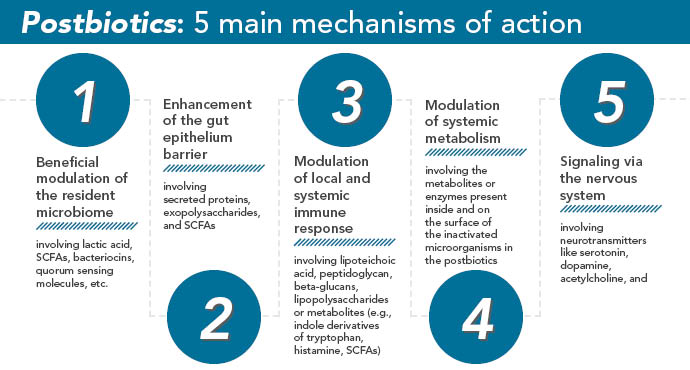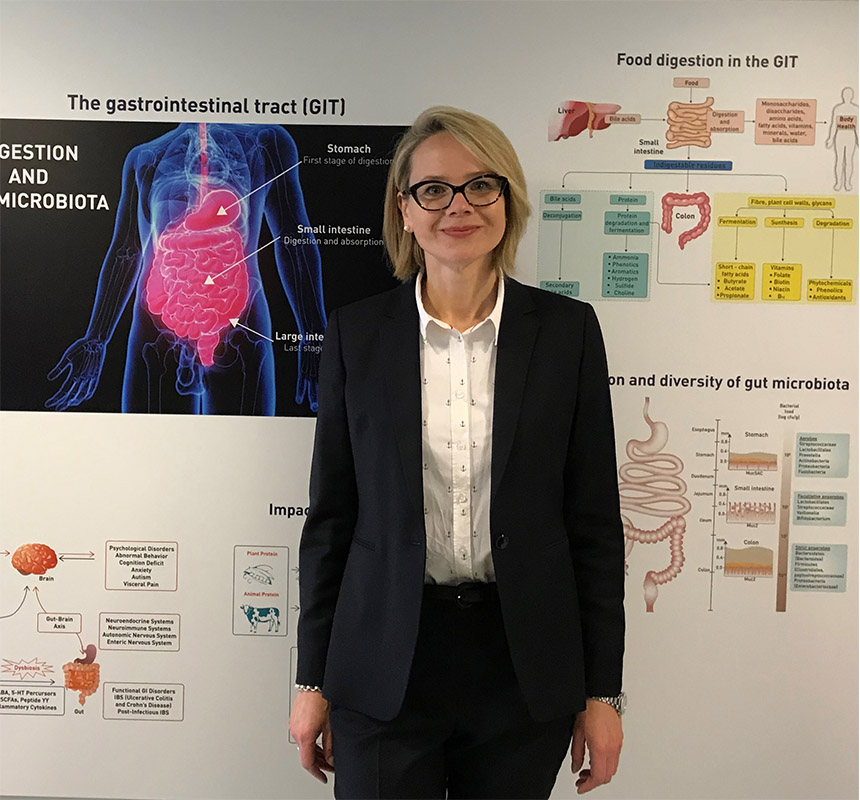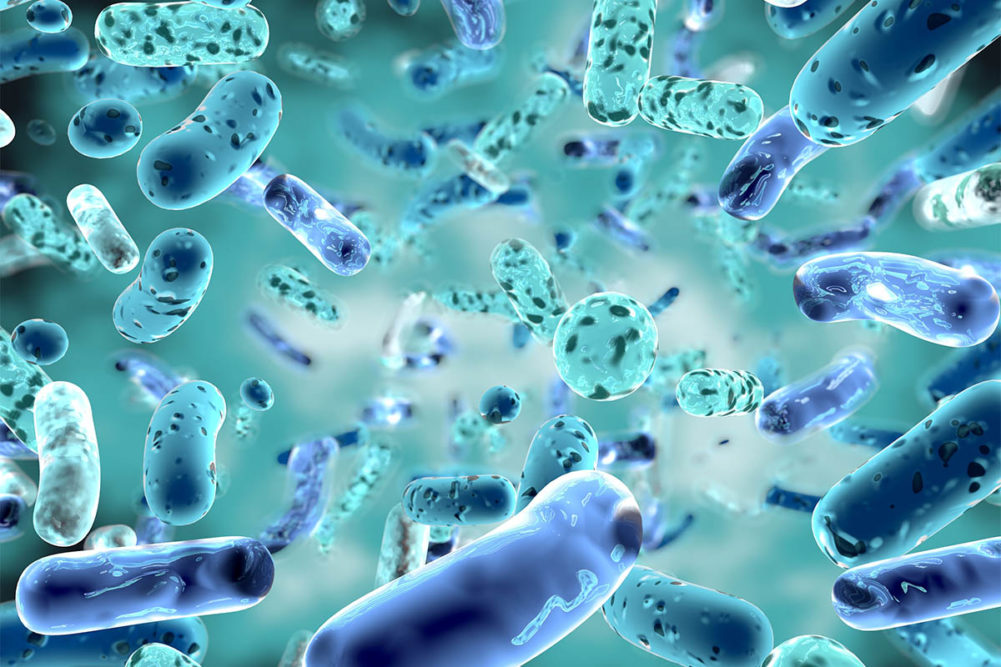Pre- and probiotics have been heralded as hero ingredients in the human food and supplement space for decades. Given the humanized status of today’s pets, it only seems natural that scientists and ingredient innovators the world over — including ADM — have tasked themselves with answering the question: What can biotic ingredients do for pet health?
Biotic ingredients have emerged as a veritable way to improve and even extend the lives of dogs and cats through diet. What’s more, pet owners are becoming increasingly interested in these ingredients and their potential health benefits for pets.
According to a 2022 survey by MarketPlace, 29% of pet supplement shoppers said they associate probiotics with health benefits and 9% associate prebiotics with health benefits. Additionally, data from NielsenIQ for the 52-week period ended Aug. 13, 2022, showed sales for pet products with “gut health” attributes were up 213% year-over-year, whereas sales for products with “probiotic” claims were up 78% over the same period.

Gustavo Zenaide, vice president of Pet and Animal Wellbeing at ADM.
| Photo submitted by ADM“What we see from the industry is that the whole biotic ingredient category is gaining a lot of momentum in pet foods and treats compared to other active ingredients,” said Gustavo Zenaide, vice president of Pet and Animal Wellbeing at ADM.
While pre- and probiotics may be most familiar to a pet-owning consumer, a new biotic is making its way into the human and pet supplement space: postbiotics. These emerging ingredients are taking the merits of biotics and enhancing them through flexibility, stability and safety for pets and product manufacturers alike.
What is a postbiotic?
Following decades of research on postbiotics, the International Scientific Association of Probiotics and Prebiotics (ISAPP) just recently came to a consensus on the definition and scope of postbiotics. According to ISAPP, a postbiotic is “a preparation of inanimate microorganisms and/or their components that confers a health benefit on the host.”
The key word here is “inanimate.” This nine-letter distinction is what sets postbiotics apart from pre- and probiotics from both a nutritional and processing functionality standpoint. Because postbiotics are inactivated microorganisms, they are more stable and safer during storage, handling and shelf life.
“Postbiotic ingredients make the benefits of the biotics easier to incorporate into human and animal nutrition products, because they have an inherently lower susceptibility to storage conditions, due to inactivation, as well as meet consumers’ needs to provide a safe product,” said Ramona Cernat, Ph.D., research and development director for Health & Wellness at ADM.
According to Cernat, a biotic must meet certain requirements to qualify as a postbiotic. These requirements include:
- Molecular characterization of the progenitor microorganisms used
- A detailed description of the inactivation procedure and matrix used to produce the postbiotic
- Confirmation that inactivation has occurred
- Evidence of a health benefit in the host through controlled, high-quality trials
- A detailed description of the composition of the postbiotic preparation
- A safety assessment of the postbiotic preparation in the target host
A postbiotic may contain intact inanimate microbial cells and/or microbial cell fragments or structures — such as cell walls, membranes, exopolysaccharides, lipopolysaccharides, lipoteichoic acid, beta glucans, peptidoglycan — with or without metabolites or end products —such as microbial metabolites or enzymes, short-chain fatty acids (SCFAs), lactic acid, bacteriocins, secreted proteins, quorum-sensing molecules, and even neurotransmitters such as serotonin, dopamine acetylcholine, and gamma amino butyric acid.
How these molecules translate to health benefits depends on the postbiotic preparation and five key mechanisms of action, according to Cernat.
“We are exploring a number of health benefits from digestive health to gut health and immune function to oral health, skin and coat, and mental wellbeing,” she said. “Besides that, clinical evidence indicates that postbiotics — especially bacteria-derived postbiotics — are promising ingredients to support digestive and metabolic health as well as immune function.”
These benefits are delivered through five main mechanisms of action, which could be similar to those known for probiotics, and can act independently or in combination, Cernat noted:
- Beneficial modulation of the microbiome
- Enhancement of the gut epithelium barrier
- Modulation of local and systemic immune response
- Modulation of systemic metabolism
- Signaling via the nervous system
 Source: Sosland Publishing Co. / Jordan Tyler (Info from ADM)
Source: Sosland Publishing Co. / Jordan Tyler (Info from ADM)
From challenges to opportunities
Stability and shelf life are two key concerns when it comes to certain biotic ingredients, particularly probiotics. Because probiotics are live microorganisms, they can pose challenges along the supply chain and during processing, potentially hindering optimal nutritional efficacy and longevity in a finished product.
According to Cernat, postbiotics have the potential to turn these challenges into opportunities for manufacturers.
“Postbiotics offer significant formulation, flexibility and safety,” she said. “The formulation flexibility is related to the inherent stability of postbiotics, which is useful during the industrial processes and shelf life. Postbiotics are well suited to geographical regions lacking reliable cold chains or ambient temperatures that can cause problems for the storage of probiotics. Being in an inanimate form means that they don’t present risk of acquisition or transfer of antibiotic resistance and virulence genes within the microbiomes — gut, skin, oral and so on.”

Ramona Cernat, Ph.D., research and development director for Health & Wellness at ADM.
| Photo submitted by ADMADM is primarily focused on postbiotics derived from live bacteria, including bifidobacteria, lactobacilli, and other probiotic bacteria. According to Zenaide, the company uses heat treatment technology to preserve the live bacteria in an inanimate form.
“That is where we believe our differentiating point is compared to other companies,” he noted. “We are able to preserve many of the components that bring the functionality, which then becomes a health benefit.”
Postbiotics are still a relatively new ingredient in the pet food, treat and supplement space in North America and Europe. According to Zenaide, registering probiotics for use in animal feeds in the European market can be challenging, so the use of postbiotics actually poses an opportunity for brands in the region to incorporate these inanimate microorganisms into their products, as many of them are already approved by the European Food Safety Authority (EFSA).
Postbiotic prospects
While postbiotics may be emerging as a high-interest ingredient in the pet nutrition space, there is still research to be done to prove their efficacy and safety, not to mention the education needed to accurately communicate the benefits of postbiotics to both manufacturers and consumers.
One of ADM’s customers recently launched a product containing the company’s BPL1™ postbiotic ingredient, Bifidobacterium animalis subsp. lactis CECT8145*. In human clinical trials, the ingredient was shown to help reduce measures of metabolic health, such as visceral fat and waist circumference, in obese adults.
Zenaide said a recent, unpublished canine study examined the heat-treated version of ADM’s probiotic strain BPL1™. Preliminary analyses show that the heat-treated version of ADM's probiotic BPL1™ modulated the microbiome of dogs supplemented with the postbiotic.
“It’s just as important to highlight that the better the functionality of the ingredient — and especially the more scientific evidence you have behind it — the better it becomes for pet manufacturers but also pet owners down the line to see the effect and the improvement in their own pets,” Zenaide said. “Visible benefits — which are easy to see in digestive benefits, in oral benefits, and skin and coat — make consumers believe, even more than the education that the industry must still do around the term postbiotics.”
Additionally, the regulatory framework for biotic ingredients is evolving alongside the research.
“So far, no regulatory authority has recognized and defined the term postbiotic,” Cernat explained. “We have the scientific definition of a postbiotic, but that doesn’t mean that in the near future the regulatory bodies will align with that.”
Zenaide noted the Association of American Feed Control Officials (AAFCO) maintains a list of approved bacterial strains that are permissible for use in pet nutrition products. Similarly, EFSA has approved several inanimate microorganisms for use in animal feed products, including some strains of Bifidobacterium and lactobacilli. Therefore, as long as a postbiotic contains bacterial strains that are already approved by AAFCO and EFSA, they are technically approved for use in pet food.
This means the current regulatory framework for postbiotics is neither here nor there, but the onus remains on biotic ingredient producers and other industry members to prove the efficacy, safety and functionality of postbiotics for them to be more widely adopted in the market — and accepted by consumers.
“This puts the ball back in our court, from a scientific perspective, to bring evidence behind such improvements and such health benefits,” Zenaide said.
While there is still work to be done on the term “postbiotic,” both from a regulatory and consumer education standpoint, recent and ongoing research suggests these inactivated biotic ingredients could pose significant health benefits to pets, provide peace of mind to pet owners, and offer flexibility, stability and safety advantages for processors.
“Within the pet segment, given all the mentions above, postbiotics are an ingredient to watch for support of the gut microbiome, complementing ingredients like prebiotics and probiotics,” Cernat said.
Read more about biotic ingredients and how they are being incorporated into pet nutrition products.
*BPL1® is a trademark registered for Biopolis S.L. in the EU and other countries.



